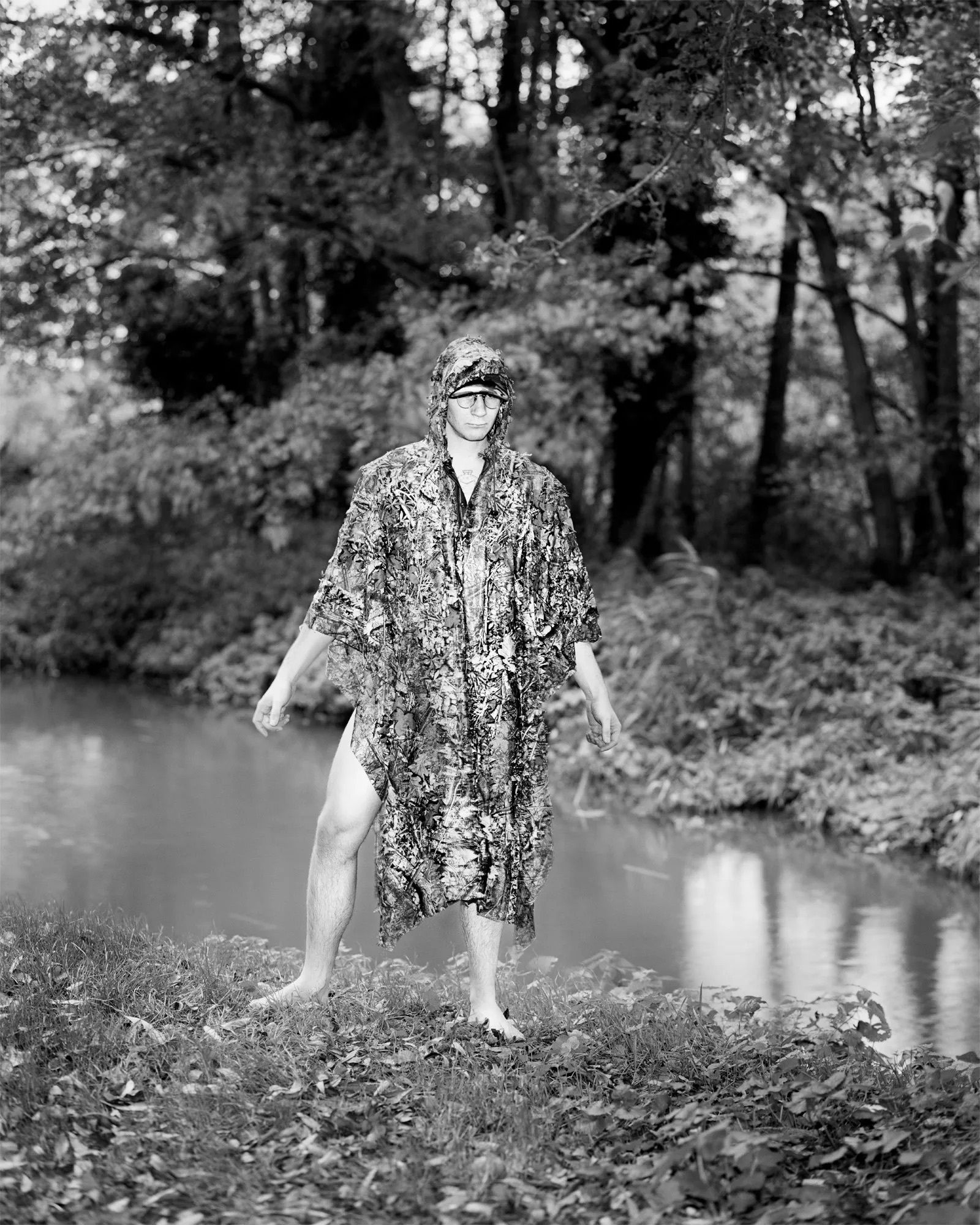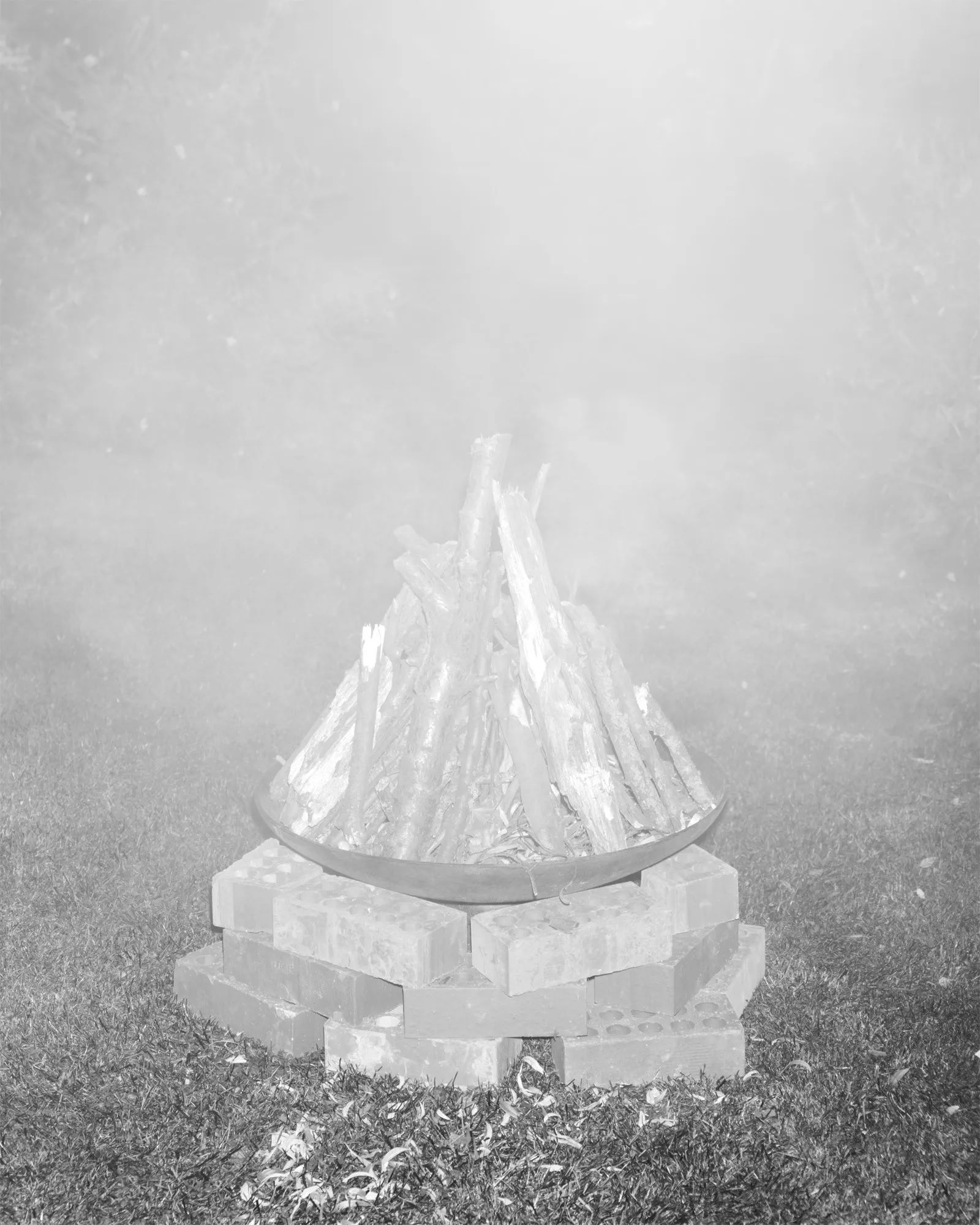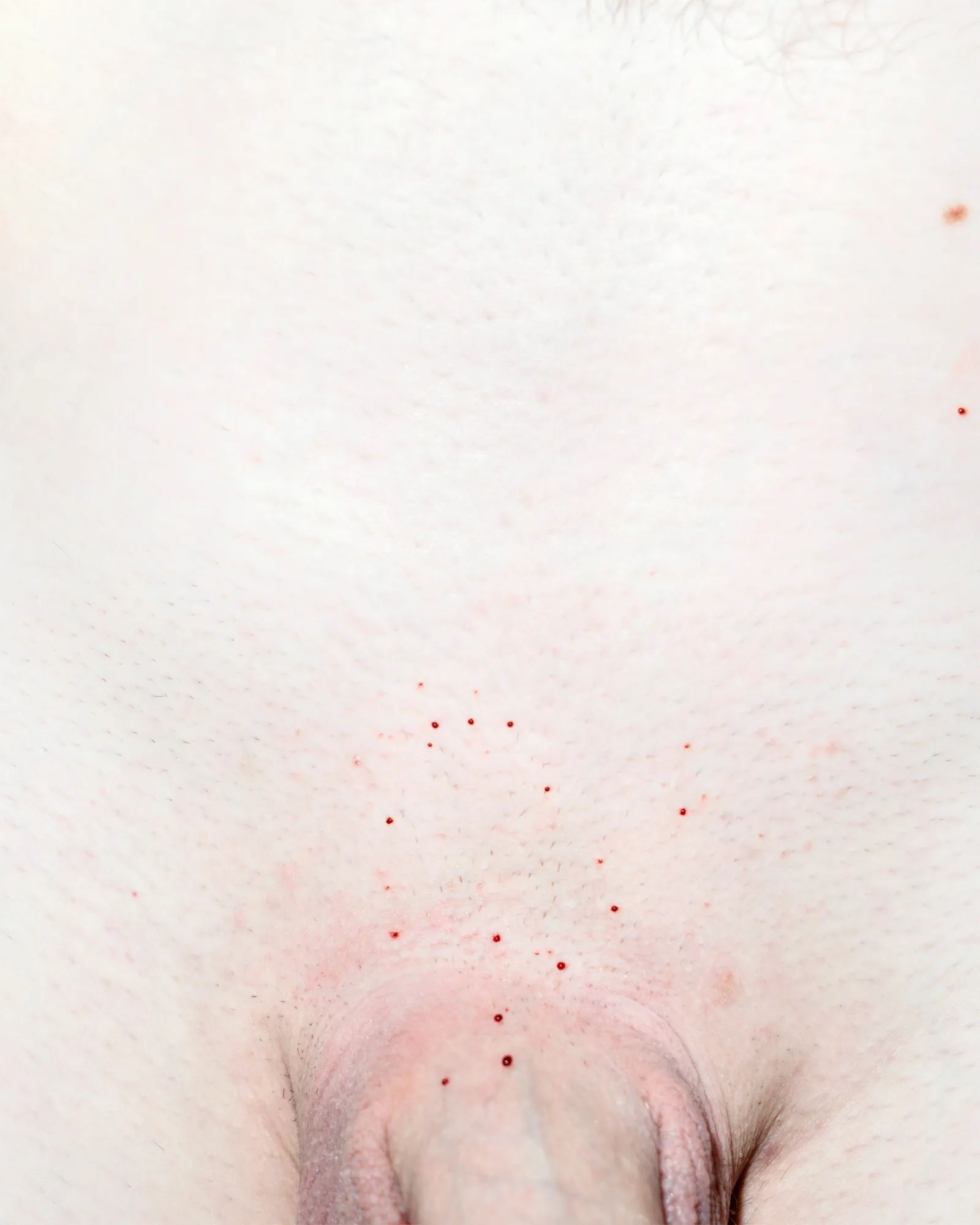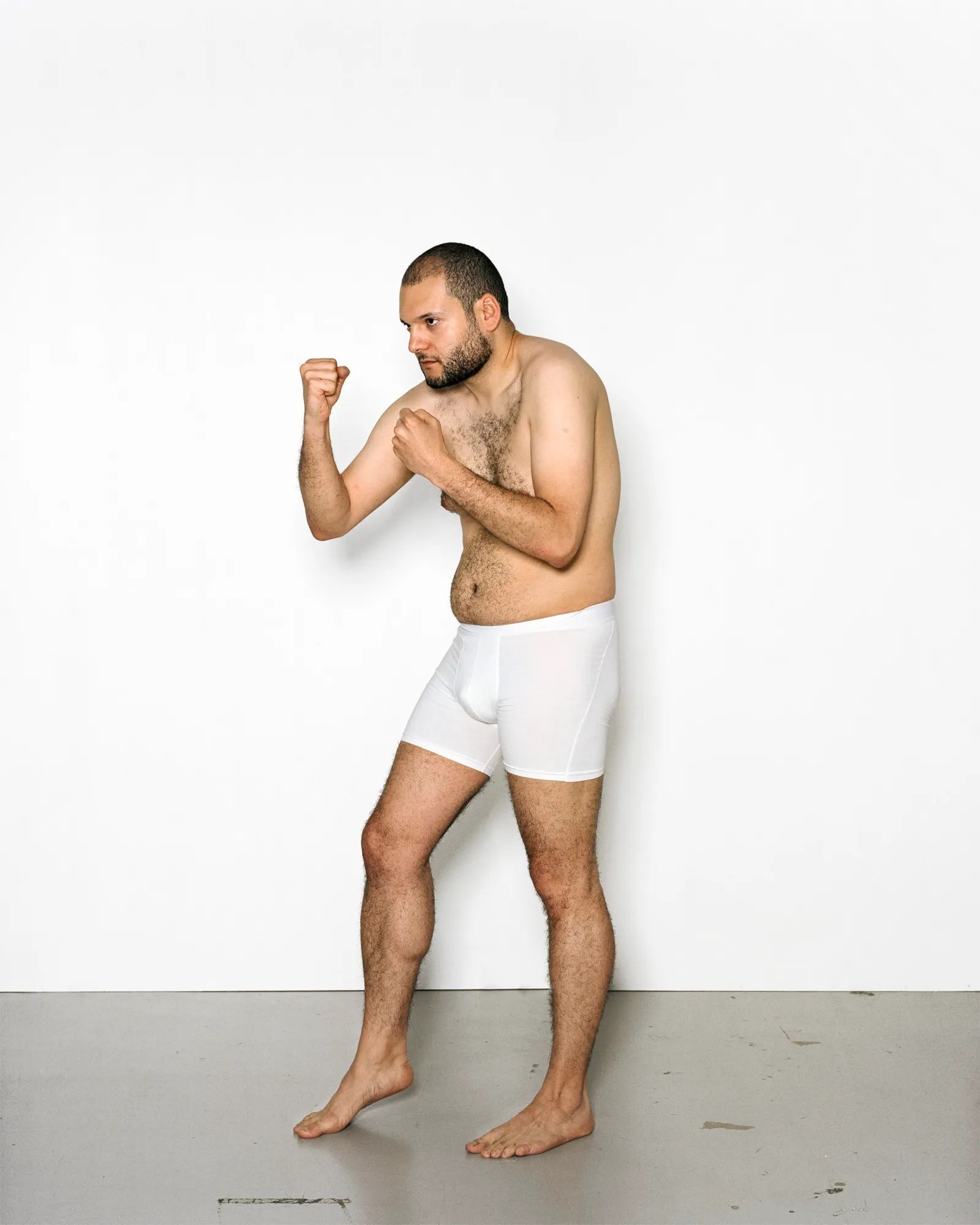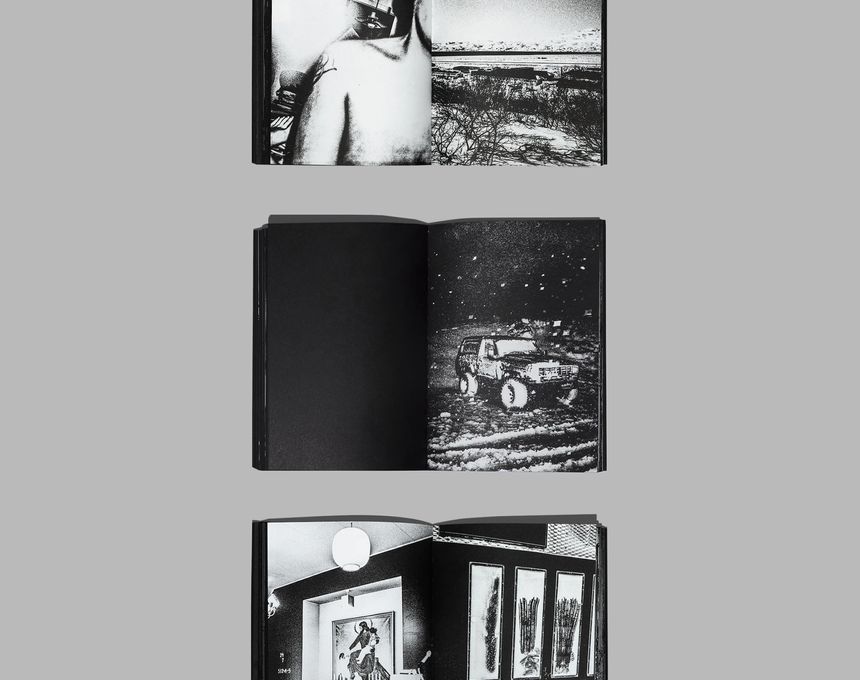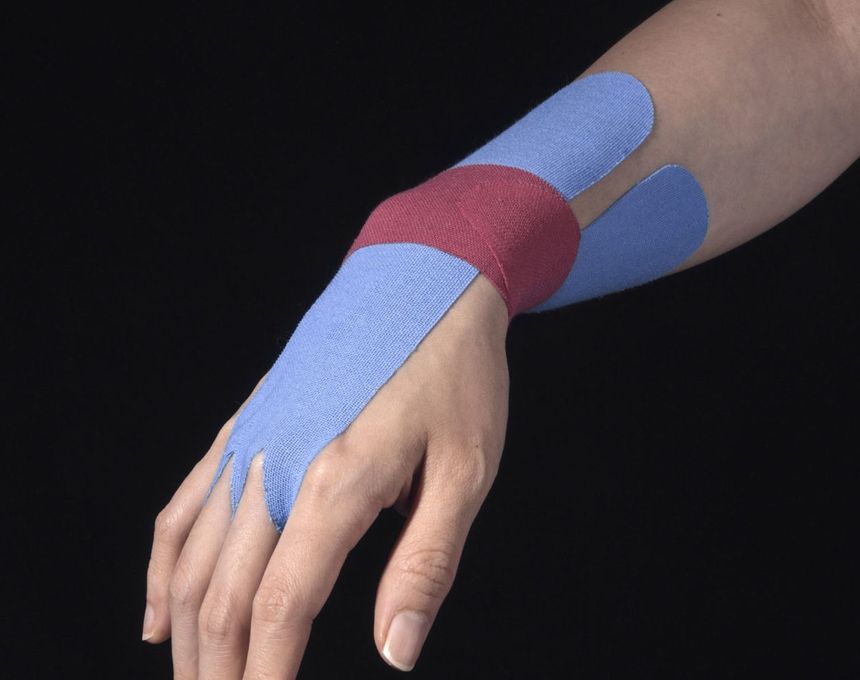A Meditation on the Deconstruction of Masculine Identity
-
Published6 Oct 2021
-
Author
In his work Five Minutes After Birth, photographer William Lakin analyses and dissects masculine identity, and identity more broadly, as conforming conducts that receive deep scrutiny in our society.
In his work Five Minutes After Birth, photographer William Lakin analyses and dissects masculine identity, and identity more broadly, as conforming conducts that receive deep scrutiny in our society.
Against a plain background, the figurines of half-naked men are stripped of their clothes as well as the role attributed to them.
Their gestures and postures imitate familiar poses, those of boxers bursting with adrenaline, prepping for a fight. The poses come from bodybuilding, boxing, martial arts. Yet, the images’ remaining visual elements confront us with a deconstructed scene and characters: the context is absent; the stage lighting and the audience are gone. The idea behind Five Minutes After Birth is an attempt to break typical roles and purposes into tiny pieces rather than presenting them as a whole. The symbol of the muscular act remains, now reduced to core gestures and pure body language.
“Once you start to take away certain ingredients that surround and support these ideas of masculinity, they become weak and flimsy quite quickly,” photographer William Lakin says of the men he portrayed in his work. “When you start to break it down into its core elements, it starts to look a bit silly. The ingredients of a male, on their own, become meaningless.”
Five Minutes After Birth analyses the idea of how such identities are imposed on men, to some degree as early as birth, and it displays the societal constructions we all participate in, as gender is being learned early on and then performed.
“I use photography in a way that highlights the idea of it being a performance, a learned identity.”
Social expectations differ for people of different genders, Lakin notices, and social norms are often imposed from an early age. This process becomes more evident in traditional and codified institutions such as secondary schools. While in early childhood, gender differences are less prominent, thus toys and entertainment usually mark the gender, a shift appears in adolescence: social roles seem more apparent during those years, and the distinctions become gendered, explicitly so. In adulthood, we lose such restrictions again, Lakin says, more careless of how people appear.
As gender and societal roles are quick to become indistinct, their representation in Five Minutes After Birth questions the viewer's perception: for example, are we presented with a male fight, saturated with an open display of virility, or is it a sensual struggle soon to turn into a carnal dance? “The line between hypermasculinity and homoeroticism is often actually quite thin,” Lakin says. “Big muscular physique can be read in both of those ways. It straddles both worlds.”
In western standards, the two ideas might have often been kept opposite and separated on purpose, Lakin continues, but in reality, usually, they're not. And a lot of the visual language they utilize and share crosses over between both realms.
The image of fingers playing with a ruler, measuring their length, is emblematic of how quickly we attribute meanings. The technique refers to a theory about the ratio between the fingers’ lengths and different levels of prenatal testosterone, and eventually behavioral differences. And yet, the act undoubtedly recalls the idea of men measuring other parts of their anatomy, “the idea of measuring up,” Lakin says.
Still, his perception of masculinity changed during his project, evolving into a chamber for a broader reflection on how difficult and ambiguous it can be to reach any definite conclusion on this matter.
Broadening his research, he came to realize how the subject matter was likely a topic of debate in constant evolution, especially at a time of public discussion that offers multiple perspectives on our very individual and communal nature. Ultimately, the visual exploration he confronts doesn't cease with but goes beyond the idea of masculinity.
“The issues of identity are very discussed and debated at the moment, about different types of identity and social hierarchies. It helps to understand that people are not necessarily one way or the other, but the people often learn their identity through their circumstances, through the people they're surrounded by,” Lakin says. “Essentially, this is not just about masculinity. Most people are—well, everyone is—learning and performing different identities.”
--------------
All photos © William Lakin, from the series Five Minutes After Birth
--------------
William Lakin is a photographer based in London. His work centers around shared narratives and ideologies. Using photography as a tool to isolate and disrupt symbols of power and culture, his intention is to reveal how the apparently ordinary can be symptoms of larger social constructs. Follow William Lakin on PHmuseum and Instagram.
Lucia De Stefani is a writer focusing on photography, illustration, culture, and everything teens. She lives in New York. Find her on Twitter and Instagram.
--------------
This article is part of the series New Generation, a monthly column written by Lucia De Stefani, focusing on the most interesting emerging talents in our community.
